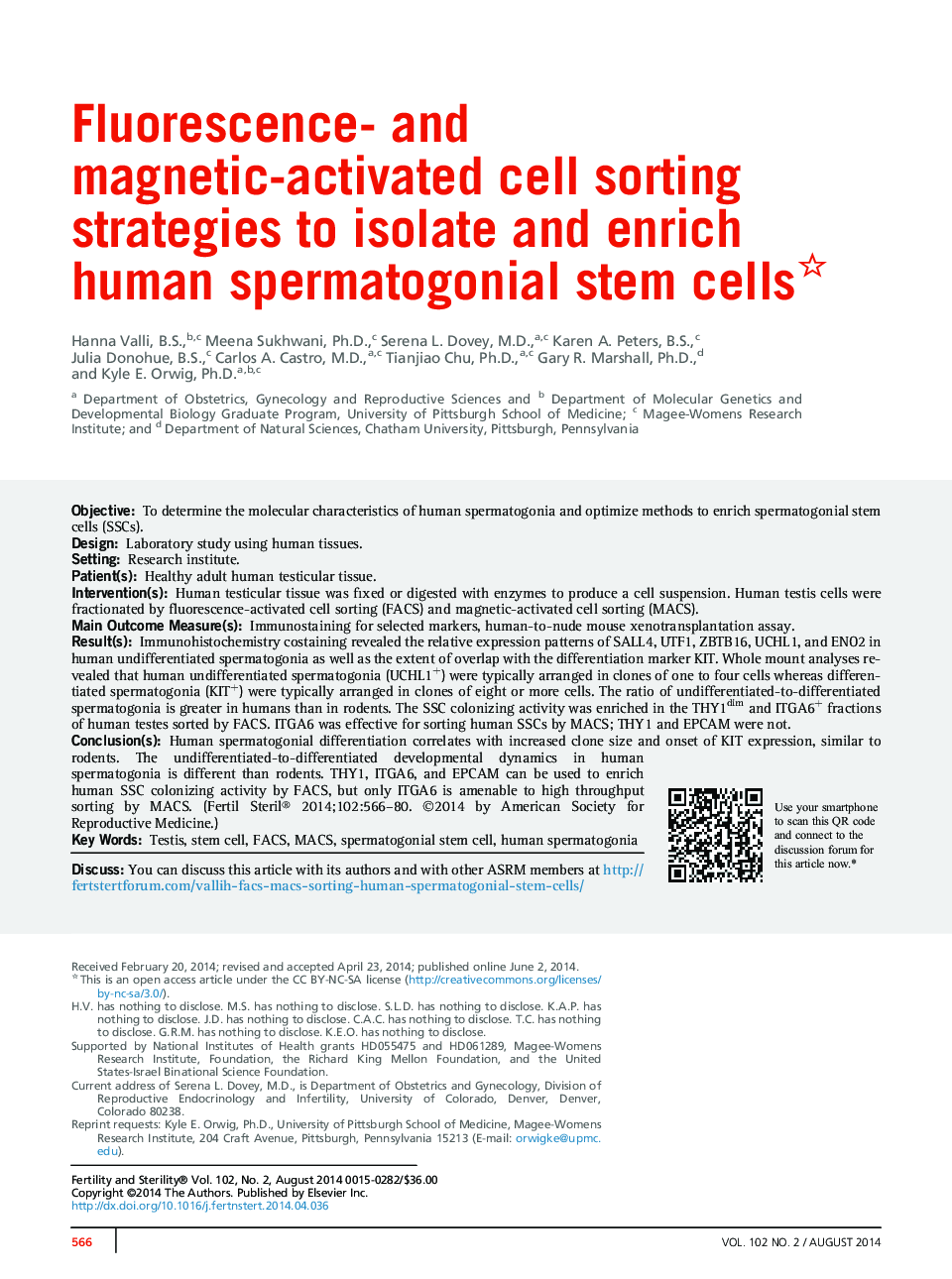| Article ID | Journal | Published Year | Pages | File Type |
|---|---|---|---|---|
| 6181752 | Fertility and Sterility | 2014 | 22 Pages |
ObjectiveTo determine the molecular characteristics of human spermatogonia and optimize methods to enrich spermatogonial stem cells (SSCs).DesignLaboratory study using human tissues.SettingResearch institute.Patient(s)Healthy adult human testicular tissue.Intervention(s)Human testicular tissue was fixed or digested with enzymes to produce a cell suspension. Human testis cells were fractionated by fluorescence-activated cell sorting (FACS) and magnetic-activated cell sorting (MACS).Main Outcome Measure(s)Immunostaining for selected markers, human-to-nude mouse xenotransplantation assay.Result(s)Immunohistochemistry costaining revealed the relative expression patterns of SALL4, UTF1, ZBTB16, UCHL1, and ENO2 in human undifferentiated spermatogonia as well as the extent of overlap with the differentiation marker KIT. Whole mount analyses revealed that human undifferentiated spermatogonia (UCHL1+) were typically arranged in clones of one to four cells whereas differentiated spermatogonia (KIT+) were typically arranged in clones of eight or more cells. The ratio of undifferentiated-to-differentiated spermatogonia is greater in humans than in rodents. The SSC colonizing activity was enriched in the THY1dim and ITGA6+ fractions of human testes sorted by FACS. ITGA6 was effective for sorting human SSCs by MACS; THY1 and EPCAM were not.Conclusion(s)Human spermatogonial differentiation correlates with increased clone size and onset of KIT expression, similar to rodents. The undifferentiated-to-differentiated developmental dynamics in human spermatogonia is different than rodents. THY1, ITGA6, and EPCAM can be used to enrich human SSC colonizing activity by FACS, but only ITGA6 is amenable to high throughput sorting by MACS.
